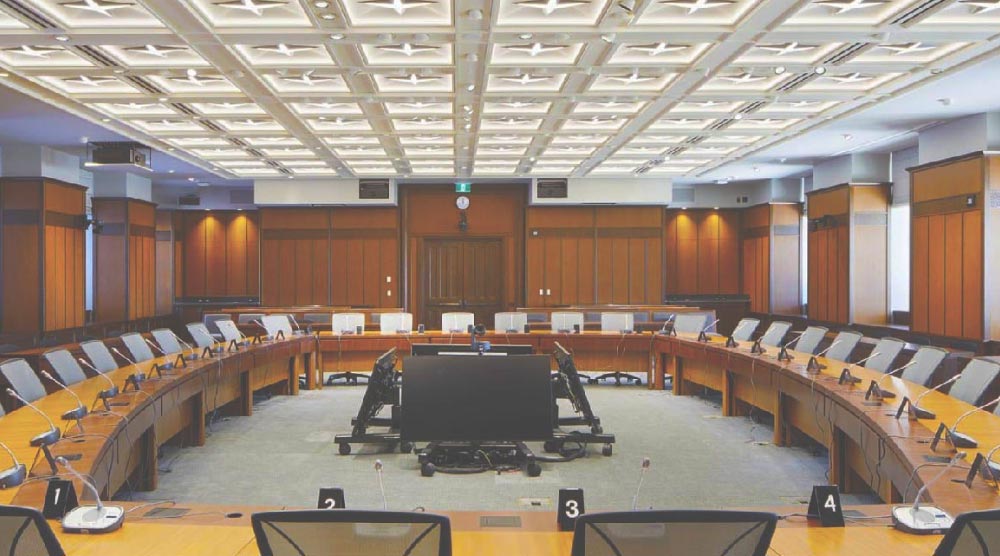OTTAWA: The National Citizens Inquiry (NCI) – a citizen-led inquiry into Canada’s response to COVID-19 – is extending a call to Canadians across the country in search for witnesses. Both expert and non-expert, these individuals are invited to join in nine hearings across the country.
The closing of the Public Order Emergencies Commission left Canadians with more questions than answers about the pandemic response – at all levels of government. With calls for more transparency coming from all federal opposition parties, Blacklock’s Reporter indicated on December 8th that the Liberal government is planning a secretive “internal report” on its handling of the pandemic. Our government officials are effectively “grading their own work,” as Blacklock’s put it.
But with polls showing that 3 out of every 4 Canadians felt harmed by the pandemic response, politicians and bureaucrats reviewing their own notes is not enough. Canadians want their voices to be heard.
The National Citizens Inquiry will give a voice and a platform to those who have been left out of the government’s pantomime. Only with the full support and participation of the public can we have a real conversation around what went right, what went wrong, and how we can properly prepare for the future.
Projected dates for the Inquiry are for in-person and virtual hearings to begin in mid March and conclude by mid May. The proposed locations are Moncton, Montreal, Toronto, Winnipeg, Saskatoon, Red Deer, Victoria, and Ottawa, with the Commissioners expected to produce their final report by late June. At this time, the NCI is inviting those who would like to participate to make a submission at nationalcitizensinquiry.ca/hearings.
This invitation is extended to experts in the areas of economics; health care; mental health and wellness; constitutional expertise; learning; and any other area significantly affected by pandemic response at any level. The call also extends to non-experts those with personal stories that have been overlooked, stories that will help illuminate any shortcomings in the responses of the last year.
Take the example of Brian and Kelly.
Before the COVID-19 measures, Brian and Kelly were the owners of a thriving fitness centre in the GTA. In fact, they had just opened their second location. Banks would tell them their growth and returns were exceptional and were eager to support them.
Then Ontario locked down for “two weeks to flatten the curve.” Forced closures or severe capacity restrictions became the norm for two years for small businesses like theirs.
Brian and Kelly did their best to keep up with the province’s unpredictable, inconsistent, and unclear measures. They innovated, began offering online classes. Reduced or eliminated their own pay to keep the lights on and employees paid.
But while the government gave exemptions and went easy on major retailers and corporations, small business owners like Brian and Kelly got no reprieve. The government made it illegal to operate above 30% capacity. But landlords were free to charge 100% of the rent, same with utilities.
First they used up their savings, then their inheritance and then they sold all their meaningful possessions. There was no Plan B for them: No expensive education or wealthy family to fall back on and restart their lives. And as business owners, not employees, they did not even qualify for employment insurance.
They had hoped the health emergency would be over and trusted the politicians’ promises. Weeks became months. Then until we had masks and layered protection. Then once we got the vaccines. Then once most got vaccinated. Then after autumn, then after winter…
Backs against the wall, they began accepting the government’s predatory loans, which made them sign as personal guarantors, hoping they could just outlast the restrictions.
March 2022 came and the restrictions finally ended for good. But most of their customers never came back. Surrounding gyms observed the same. After two years of restrictions, GTA residents had adapted. They bought their own gym equipment, started new routines, or simply could not afford a membership anymore.
They hoped this was temporary – a market correction. But the spring and summer passed, and fall was coming. There was nothing left. Costs exceeded revenue. Multiple commercial and government loans had been used up.
In late October, they let go of all their staff—nearly 10 Canadians who will now at best find minimum wage retail work, and at worst be on EI and welfare for some time.
As for Brian and Kelly, they defaulted on their loans. They are praying now that their creditors realize there are no personal assets to go after. The creditors are fully within their right to force them into insolvency and have them declared bankrupt.
Brian and Kelly are staring at a grim future in Canada. There is nothing to restart from—they are going on welfare. And if they are declared bankrupt, they will not even be allowed to try and restart for several years.


